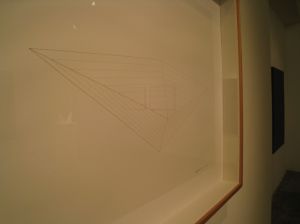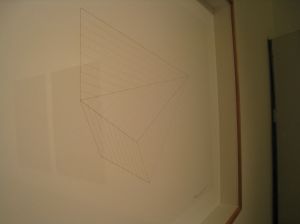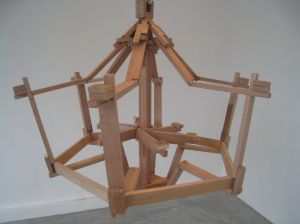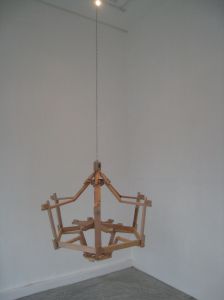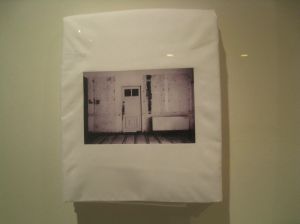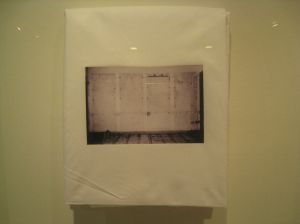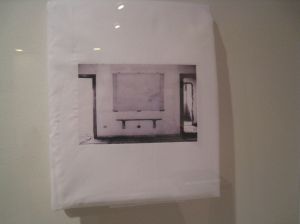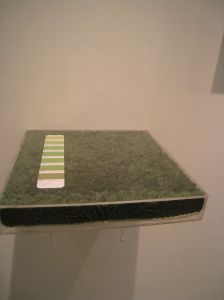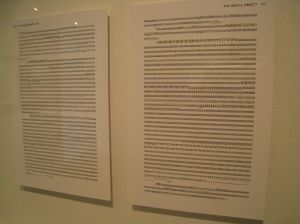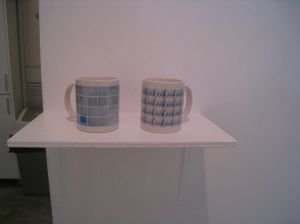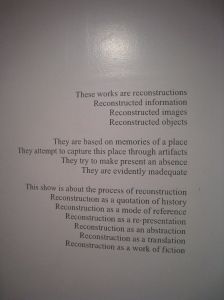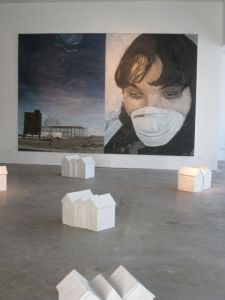Now here’s a show that makes others out there look pretty superfluous. You don’t expect fluff and excess at an exhibit headlined by Bea Camacho and Maria Taniguchi. You get work that’s been stripped of layers, reduced to their basic essences. The challenge for the viewer lies in working back, reconstructing what has been peeled off, to fully appreciate their pieces.
Majority of Bea’s works hang in the first of Galleria Duemila’s two rooms. Framed simply in black and printed on archival paper, Bea has shown fifteen laser etchings of interconnected triangular patterns.
These depict the manifold combinations that Bea has come up with in her attempts to render two structures into abstract forms. A small-scale sculpture that resembles two conjoined pyramids has been fabricated similar to an architectural maquette. Displayed on a stand, this marks Bea’s starting point, the base from which she has transformed the 3D into a series of two-dimensional pieces.
I don’t see myself bringing home art as devoid of ornamentation as Bea creates. However, I do enjoy sifting through her processes. Her concepts are never complicated, and her pieces come out as logical conclusions to valid premises.
Maria presents five paintings in black, marked contrasts to Bea’s white works. Maria has covered
the entirety of her canvases in a brick-like pattern–a labor-intensive, fastidious employment of her painting skills. She calls these pieces Untitled Mirrors. Each of them differs from the other through the varied rectangular patterns that seem to have been superimposed in an opposite direction atop the underlying field of “bricks”. To quote Maria, “I’ve worked with (this pattern) for a couple of years now. I stick to it because it’s efficient and really effective in creating a kind of dimensionality and thingness to the painting.”
I don’t pretend to fully understand Maria’s basis for reducing her work to these forms. But I do admit a fascination to what she has created, not least of all because of the obvious amount of work she has put into her acrylic paintings. The repetitiveness of those bricks mesmerize; one could lose oneself enjoying their depths.
Material/Parallel runs from 5 December 2010 to 30 January 2011 at Galleria Duemila, 210 Loring St., Pasay City. Phone (632)831-9990 or visit http://www.galleriaduemila.com



